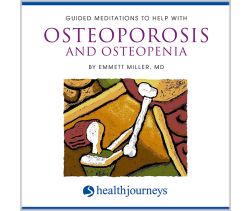Health Journeys

-
-
-
-
-
-
-
-
-
-
-
-
-
-
-
-
-
-
-
-
-
-
- Guided Imagery for Osteoporosis & Supporting Healthy Bones
Audio Download
Price Current Price: $3.99 -

























